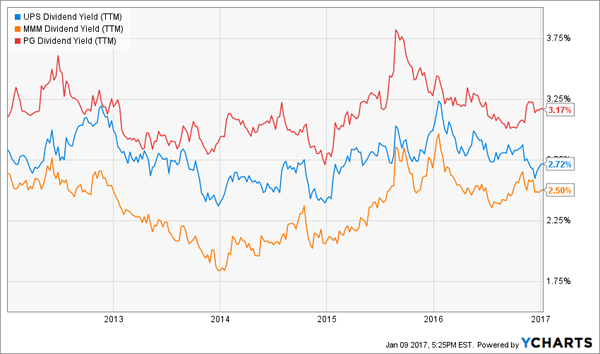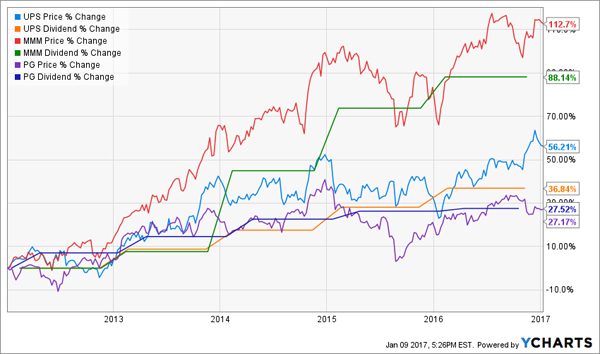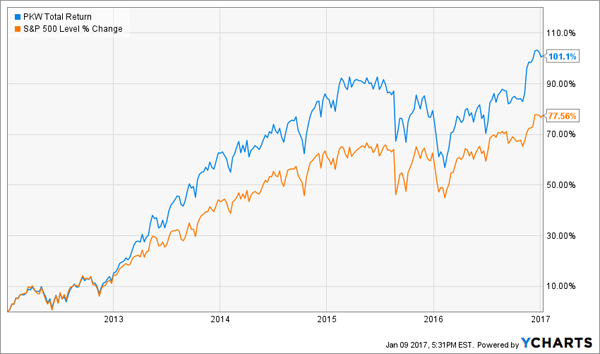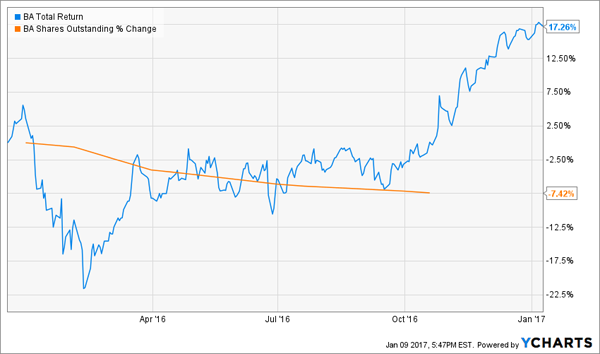“Efficient market” proponents are wrong – you can bank returns of 10%, 12% or more from stocks regularly.
But you need to ignore common Wall Street “wisdom” and follow a simple 3-step formula that I’ll outline for you in a moment.
[ad#Google Adsense 336×280-IA]Most individual investors don’t make anything close to 10% per year because they practice “buy and hope” investing.
They pick up shares and root for them to appreciate in price.
With no specific plan outlining how they are going to profit from their stocks, they are doomed.
Even “tangible” fundamental drivers like higher sales or profits are no guarantee that you will profit.
Ever been frustrated when one of your stocks trended lower after a good earnings report?
If so, you may have complained…
“The Stock Market Doesn’t Make Any Sense”
Which is true. And that’s why you must force it to make sense.
There are three – and only three – ways a company’s stock can pay you:
- A cash dividend.
- A dividend hike.
- By repurchasing its own shares.
Total up these three “shareholder return” vehicles, and you’ve got the return that you can expect from any given stock.
For example, let’s look at income-hound favorite Verizon (VZ). It pays a 4.2% yield, but we can expect higher returns because the firm is growing its dividend every year. As Verizon grows its dividend, its current yield is likely to remain the same because investors will reward the stock with a higher price as they have over the past three years:
No Coincidence: VZ Price Returns = Dividend Growth
 Future price gains should remain modest, however. Verizon is only growing its payout by about 2% annually – which means we should expect returns of about 6.2% going forward (4.2% current yield plus 2% projected dividend growth).
Future price gains should remain modest, however. Verizon is only growing its payout by about 2% annually – which means we should expect returns of about 6.2% going forward (4.2% current yield plus 2% projected dividend growth).
While investors tend to fixate on stocks’ current yields – which are widely published and available – meaningful dividend growth can be a valuable source of hidden yields.
Dividend Growth in Action
Let’s look at three popular dividend stocks – 3M (MMM), Procter & Gamble (PG) and UPS (UPS) – to see this in action. Over the last five years, the trailing yield for each of these issues has been relatively constant:
Steady Yields for Over Time…
 There’s a reason – their price returns have tracked dividend growth almost to a tee.
There’s a reason – their price returns have tracked dividend growth almost to a tee.
… As Dividend Growth Predicts Price Returns
 Buying stocks that are growing their dividends fast is the surest way to bank double-digit returns from stocks. But make sure you handpick them instead of relying on an index fund, because the S&P 500 itself is only on track for 5% to 7% dividend growth in the years ahead. I’ll share my favorite ideas with you shortly – but first, let’s talk buybacks.
Buying stocks that are growing their dividends fast is the surest way to bank double-digit returns from stocks. But make sure you handpick them instead of relying on an index fund, because the S&P 500 itself is only on track for 5% to 7% dividend growth in the years ahead. I’ll share my favorite ideas with you shortly – but first, let’s talk buybacks.
Dividend Growth on Steroids
And there’s a way to further juice your returns – look for dividend growers buying back their own cheap stock.
Stock repurchases can drive big shareholder returns. When firms reduce their outstanding stock flow, they can power virtuous cycles where their profits and dividends per share increase constantly.
These efforts have their most impact when shares are cheap and management receives the most bang for its buck. But any buyback program is usually a good way to outperform the broader market.
Take the PowerShares Buyback Achievers ETF (PKW), which simply buys stocks in companies that have reduced their outstanding share count by 5% or more over the last 12 months. This “dumb” screen doesn’t consider future repurchases or the price these firms are paying for their own shares – but it still outpaces the S&P 500 comfortably:
A Simple Buyback Criteria Beats the S&P 500
 Three simple criteria – dividend payments, dividend growth and buybacks – can boost stock returns when applied haphazardly. As you’d probably guess, they bring even more profits when applied intelligently.
Three simple criteria – dividend payments, dividend growth and buybacks – can boost stock returns when applied haphazardly. As you’d probably guess, they bring even more profits when applied intelligently.
Example: Forcing Boeing’s Take Off
This time last year, we added shares of Boeing (BA) to our Hidden Yields portfolio because the stock was cheap, and management had a plan to return significant cash to investors.
Shares were trading for less than 12-times free cash flow (FCF). The company was taking advantage of the sale price by buying back shares. Boeing had reduced its float by 11% since 2013, and had an outstanding repurchase authorization that would let it retire another 7.6%.
Add in a 3% yield and a recent impressive 20% dividend increase, and we had a formula for 10% to 30% gains in Boeing shares.
How’d it play out? Exactly as anticipated. The firm reduced its share count by 7.4% over the next year while raising its dividend by another 30% at the end of the 12-month period. Shares responded, delivering 17.3% total returns:
Share Count Down, Price and Dividend Up

— Brett Owens
The Sweet Spot: 8% Yields With Dividend Growth [sponsor]
Blue chip stocks like Boeing rarely pay current yields more than 3% or 4%. As we’ve discussed, they are simply too popular and likewise usually too expensive.
You’ll do even better focusing on stealth income plays such as closed-end funds, preferred shares and real estate investment trusts (REITs). In many cases, these issues pay secure yields of 8% or better – with dividend growth to boot!
This means you are assuring yourself of 10%+ annual returns, with most of that coming as cash dividends. These vehicles are safe, but they aren’t as well known as Verizon, UPS or 3M. And that’s a good thing for us, because we can lock up secure income streams of 8% or more while enjoying payout growth and price upside to boot.
These stealth plays are the perfect investments for 2017. Regardless of Trump’s next tweet, these 8% payers are going to become increasingly popular with income investors as they’re discovered. Make sure you buy them now, before their prices get bid up (and their yields are compressed). Click here for the details about my favorite 8% plays in funds, preferreds and REITs – and I’ll share the names, tickers and buy prices with you, too.
Source: Contrarian Outlook
